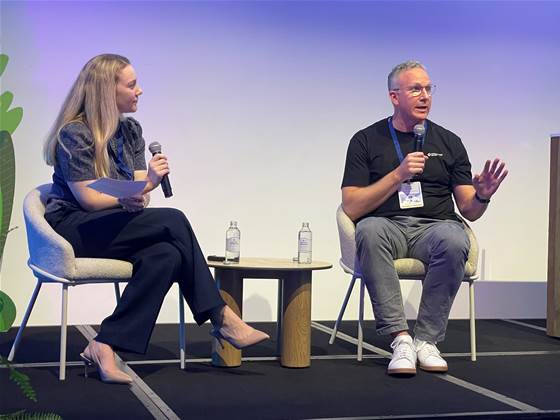Macquarie Banking and Financial Services (BFS) is starting to train and prepare its workforce now for a future that will see agentic AI introduced into various workflows and processes.

Head of control tower - a prioritisation and planning function - within BFS Shaun Kamler told an Agentforce Financial Services Summit this week that teams may need to change their ways of working for the agentic AI era.
Already, BFS has "five or six" active proofs-of-concept underway with agentic AI technology, seeing as a way to significantly improve productivity.
"We have a belief that this will unlock the next level of productivity for our organisation," he said.
"It should theoretically take away a lot of administrative tasks, and we're seeing some great examples of that across our teams that are doing POCs to really free up capacity to do more high-value activity.
"We expect that we're going to have teams of agents throughout the organisation in lots of different ways that we don't know today."
While it's still early days for the experimentation, BFS is already working to prepare its teams to interact with AI agents.
"I haven't really heard a lot of people talk about [the fact that] teams are going to need to work and talk differently," Kamler said.
"The outputs they produce are going to need to be agent-ready to consume. If you're [creating] lots of Confluence pages and putting content everywhere, you're going to create a lot of hallucination in the way that agents actually interpret that [information], s that's a big piece that we are focusing on."
BFS ran prompt engineering training for staff "a few weeks back ... to start to build that skill" ahead of broader AI agent implementation.
"We're trying to democratise this capability across the whole organisation," Kamler said.
'Digital headquarters'
At BFS, Slack plays a key role in employee experience, with Kamler positioning the collaboration and communication tool as a kind of "digital headquarters for our employees”.
The intent is for employees to read important information in Slack and then to be able to take action in another software application if they need to.
“We've been on a journey where we try to connect all of our applications [through Slack] to reduce the amount of ‘swivel chairing’ that teams do," Kamler said.
“What we want them to do is be able to get information in Slack and then take action in the applications that they do work in.
"When you think about Slack as a kind of go-to communication collaboration tool, I should be able to see information in there that prompts me."
He illustrated this concept with an example of incident management, a critical function given Macquarie's digital banking operations.
A public channel has been set up in Slack to communicate incidents to everyone in the organisation.
This is so “anyone can understand when an incident is going on, but then they can respond at pace into that incident [impacted] system if they need to," Kamler said.
Kamler noted that Slack is being integrated with a number of application ecosystems at the bank, including Atlassian and Microsoft.
"We've just started an integration with Jira," he said. "We live in a lot of the Atlassian tools, so we're seeing that [integration] actually work quite well for teams.
"That's really the way that we think [about Slack] is ultimately it's about that connectivity and ability to seamlessly move between the applications."
Not every integration had been a success.
"We actually integrated our leave approval process into Slack," Kamler said.
"That was a bit of a flop: not a lot of people use that.
"It really forced us to think about what are the things that actually add value."
Given the role Slack plays within BFS, it is also becoming a natural place to experiment with agents. One of the agents is used by product designers and software engineers to ensure code complies with Macquarie's cyber security policies.
Partnering on AI
Kamler said that BFS is looking at the potential for AI technology to improve both employee and customer experiences, although he limited his presentation to inwards- and employee-facing use cases.
The company is tapping into AI technology via two main channels: where AI is an add-on to an existing system used by the bank, and then where AI can be applied on a more enterprise-wide basis.
For the latter, Kamler cited enterprise search as an organisation-wide AI capability that is currently being pursued.
"We're doing a lot of experimentation there," he said. "That's freeing up structured and unstructured data across the organisation so we can move much quicker."
Kamler added that BFS' strategy is to work with a small number of technology partners that are "willing to collaborate with us and also co-create solutions."
"We don't go too broadly at Macquarie in terms of trying to select lots of different partners," he said.
In addition to Slack, the bank uses a number of Salesforce products including Service Cloud and Sales Cloud.


_(22).jpg&h=140&w=231&c=1&s=0)

.png&h=140&w=231&c=1&s=0)




_(26).jpg&w=100&c=1&s=0)

 iTnews Executive Retreat - Security Leaders Edition
iTnews Executive Retreat - Security Leaders Edition












_(1).jpg&h=140&w=231&c=1&s=0)



